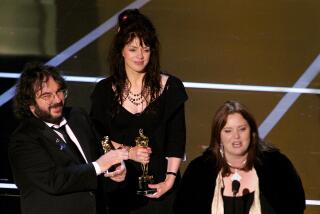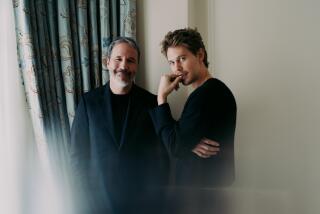Middle-earth evolution
This has been a busy year for J.R.R. Tolkien fans. “The Children of Hurin,” a grim tale of Middle-earth’s First Age, became a bestseller in the summer; film director Peter Jackson signed on to produce a movie of “The Hobbit”; and now we have more insights into Tolkien’s creative processes, with the publication of a handsomely illustrated edition of “The Hobbit” packaged with “The History of ‘The Hobbit,’ ” edited by John D. Rateliff (Houghton Mifflin: three volumes, $95). Now, wait, for Belladonna’s sake -- this boxed set isn’t a thin collection of odds and ends but a substantial look at revisions, much like what Tolkien’s son Christopher did in “The History of Middle-earth.” Rateliff’s labors have resulted in a rich treatment of the many changes, false starts and motivations behind Tolkien’s storytelling choices. In “The Hobbit’s” early drafts, the story is basically the same but with surprising variations: The hospitality of poor Bilbo Baggins is sorely tested by a band of dwarves and a blue-hatted wizard named Bladorthin (not Gandalf), who coerce him into stealing the treasure of a dragon named Pryftan (not Smaug). As the story expanded, names (and much else) were changed to mesh with Tolkien’s vision of the world he was creating.
Regarding Bladorthin, who evolves into Gandalf the Grey, Rateliff writes that “it is difficult to tell in this first appearance how much of the later character was already present” in the early drafts and “how much [Tolkien] discovered in the course of writing.” For Tolkien, as much as for any writer, writing was an act of discovery: Characters didn’t arrive fully formed. Nor did charming, simple phrases -- “As they sang, the hobbit felt the love of beautiful things made by hands and by cunning and by magic” -- flow as smoothly from Tolkien’s pen as smoke did from his pipe.
Rateliff’s efforts have a paradoxical effect: Even as they demystify Tolkien and show us that there is no such thing as easy genius, they remind us that his willingness to endure numbing revisions to develop a nuanced story is even greater reason to revere him.
nick.owchar@latimes.com
More to Read
Sign up for our L.A. Times Plants newsletter
At the start of each month, get a roundup of upcoming plant-related activities and events in Southern California, along with links to tips and articles you may have missed.
You may occasionally receive promotional content from the Los Angeles Times.





